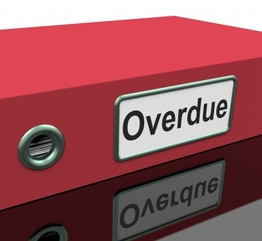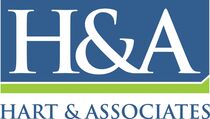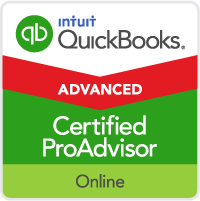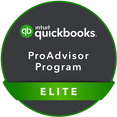For more summertime business tax planning suggestions, contact your CPA or tax advisor today. This is general information and should not be acted upon without first determining its application to your specific situation. Please contact your CPA or tax advisor for additional details.
Direct Costs If you have inventory you will have a balance in the Cost of Goods Sold account. It should represent how much you paid for product or inventory that you are selling. It is the most direct expense of all the expenses; if you don’t spend this money, you would not have a product. If you sell services, you should not have a balance in Cost of Goods Sold, but you will have direct expenses that are tied to performing your services. These might include labor from wages of the employees who carry out the services for clients. Any supplies directly involved with delivering services should be included as well. You may also have other direct costs related to selling specific products or to servicing specific accounts. Indirect Costs The next layer includes indirect expenses. These expenses do not make up your product directly and might contribute to several different lines of products. Indirect costs might be attributable to a group of products or projects and can be apportioned accordingly. Overhead Although overhead is technically a form of indirect cost, it’s good to create a separate layer for it. It includes management salaries, rent, utilities, and other fixed costs that cannot be directly allocated to a product or service. Assembling the Layers A wonderful exercise is to classify each of your expense accounts in your Chart of Accounts as direct, indirect, or overhead. In that way, you can see how each account contributes to the costs of running your business. Some questions to ask yourself:
This layered view is just another way to view the financial aspects of your business and can help you make better decisions down the road. You can also break the layers down even further by classifying the expenses as critical and non-critical. This will help you determine where best to invest while maintaining the level of profit you desire. You can’t manage what you don’t measure. Layering your expenses will help you have your cake and eat it too. And if we can help, just reach out as always. This is general information and should not be acted upon without first determining its application to your specific situation. Please contact your CPA or tax advisor for additional details.
© Masta 4650 Dreamstime.com It is generally a good idea to keep overhead costs low so that your business profits will be higher. This is especially true with items that are easily commoditized and fairly standardized, such as utilities and rent. But there are times when increasing expenses pays off nicely, and here are five areas to consider so you can reap the rewards. Training Whether it is for you or your staff, good training can pay back for years to come. Learning new skills, no matter our trade, will keep our businesses from becoming stagnant. Implementing what we learn will help us grow. You might get training to increase the mastery of your chosen profession. You might also want to consider general business skills, including technology, marketing, finance, and leadership. Just about everyone can benefit from learning more about project management, communications, and negotiations, to name a few more. You might also want to consider “human performance” skills such as public speaking. Whatever you choose, training is always a great investment that pays back big dividends. Tools Without the right tools, the same task can take double the time. It is a great idea to provide your employees with the most powerful computers and software on the market. The cost of labor outweighs the costs of the computers, so it makes sense to load employees up with the best tools possible. An employee with a slow computer, through no fault of their own, is not giving you their best, and that will cost money in lost productivity. The same thing goes for owners. You can spend your time fighting with a machine or getting a ton of work done. I am pretty sure the latter is more profitable. Accounting The most successful companies we work with invest in accounting services in five areas: accounting technology, accurate bookkeeping, thorough reporting, tax minimization, and professional consulting. When we see business owners cutting corners in any of these areas, it usually costs them more money in the long run to clean up the problems that result. An up-to-date accounting system minimizes maintenance and troubleshooting costs. Making sure the bookkeeping and reconciliations are done properly is essential for compliance reporting and decision-making. A robust set of reports allows a business owner to make smart decisions about running their business, and minimizing taxes helps you keep more of what you make. Since accountants see thousands of financial reports in their careers, they have developed an eye for opportunities that a business owner may not see. Bringing an outside perspective into your business is a good investment that can help you discover great opportunities in your business. Marketing Whatever you do in your business, you are helping others. You are sharing a skill you have that your clients either do not have or do not choose to do for themselves. Being a best-kept secret does not help you share your gifts and talents. Marketing can help you get the word out to people who need your services but might not know about you. Developing great marketing materials will help you communicate what you do as well as receive fair compensation for what you do. It almost always makes sense to invest in this area of your business. Employee Perks and Benefits Keeping employees passionate about your vision and motivated to be productive is a continuing task. One way to do that is to provide employee benefits and perks that make it attractive for employees to work for you. There are many ways to invest in your employees. Good health insurance, personal time off, extra vacation time, education reimbursement, flex time, and working from home are just a few of the many options you can choose from to enhance employees’ working environments. Measuring the Payoff If you have not already started investing in the above areas, start out by picking one or two as your initial focus. Then watch and see how your business benefits. This is general information and should not be acted upon without first determining its application to your specific situation. Please contact your CPA or tax advisor for additional details.

If you’re in business long enough, you’ll run into a customer who does not pay you. Despite your best efforts, you may conclude that you will never receive the money.
Do you have a tax-deductible bad debt? The answer depends in part on whether you operate your business using the cash or accrual method of accounting. Cash. When you use the cash method, you report taxable income when you receive it and deduct expenses when they are actually paid. While this makes your bookkeeping simple, you get no direct deduction for a bad debt. Since the income was never received, it was never reported or taxed. However, you will still be able to indirectly deduct the labor, merchandise, and overhead used to provide for the goods or services that were delivered but not paid for. Accrual. Under the accrual method, you report income when you send an invoice to the customer. Expenses are deducted when they are due, regardless of when you pay them. This method is more complicated than the cash method, since you must track accounts receivable and accounts payable. However, because you report taxable income when you bill your customers, you have a bad debt deduction that you can claim as an operating expense if your customers fail to pay. For more information about accounting for bad debts, contact your CPA or financial advisor.
This is general information and should not be acted upon without first determining its application to your specific situation. Please contact your CPA or tax advisor for additional details.
Above image courtesy of Stuart Miles at FreeDigitalPhotos.net
I am excited to announce that I have passed the QuickBooks Online (QBO) Advanced Certification exam. This certification is held by a smaller percentage of QBO Certified Pro-Advisors and requires knowledge and understanding of QBO, accounting, and client support.
I look forward to using new insights learned to successfully support my clients. |
AuthorSuccessfully meeting the challenges inherent to new and smaller businesses provides me with a special type of satisfaction. Archives
February 2022
Categories
All
|





 RSS Feed
RSS Feed







